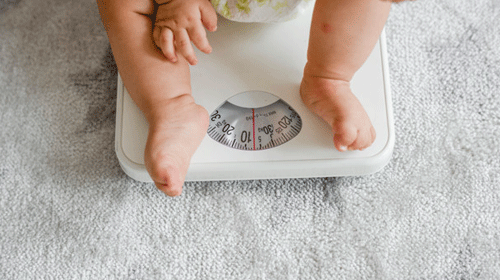A baby weight chart is one that plots the weight of a child on a graph, comparing it with the weight of other children with gender and age factors remaining constant. Also, the chart indicates the percentile into which the child’s weight falls.
For laymen, a percentile is simply a statistical measure, indicating the value in which a given percentage of observations within a group of observations falls under.
Things to Include in a Baby Weight Chart
There are a few fundamental elements that constitute a complete baby weight chart. These elements are the child’s
- weight
- height
- head circumference
- body mass index(BMI)
A baby weight chart helps monitor the health and wellness of the child, using the essential parameters above.
Baby Weight Chart Examples
Here are some sample baby charts to help you.
Weight Chart for Baby Girls
Weight Chart for Baby Girls – this is a type of baby weight chart that plots the weight of a female child on a graph, comparing it with the weight of other female children with the age factor remaining constant.

Height & Weight Chart for Girls

Baby Weight Chart by Month
Baby Weight Chart by Month – this is a type of baby weight chart that plots the weight of a child on a graph, comparing it with the weight of other children with gender and age factors remaining constant, according to month.

Baby Weight Chart During Pregnancy

Breastfed Baby Weight Chart
Breastfed Baby Weight Chart – this is a type of baby weight chart that plots the weight of a breastfeeding child from 0-2 years on a graph, comparing it with the weight of other children with the gender and age factors remaining constant.

Newborn Baby Weight Chart
Newborn Baby Weight Chart – this is simply a baby weight chart for a newborn child.

When and How Baby’s Weight Should be Measured?
The process of monitoring your baby’s development begins right at the onset of the pregnancy with the help of a children’s healthcare provider or pediatrician. However, the first time for which your baby’s weight will be measured is immediately after delivery. After that, the child’s development will continue to be monitored, whereby checking his or her weight will become an essential part of each appointment.
In the beginning, the doctor will probably schedule checkups for every few weeks, and then every few months until the baby is one year old. Don’t worry about not knowing how often you’ll need to see the doctor as he or she will tell you how frequently. Feel free to ask your doctor any question that’s related to your child’s development, though.
As for how your baby will be measured, the doctor will measure three essential things, i.e.;
- The head circumference. Here, the doctor will tie a soft tape measure around the fullest part of your child’s head from above the eyebrows, running it over the ears to the back of your child’s head.
- The child’s length. In this step, the children’s healthcare provider will lay the child on a flat table, stretching out the child’s legs to get an accurate measurement from the top of hir or her head to the soles of his or her feet.
- The child’s weight. Here, the doctor will ask you to undress the baby first. After you’ve done so, the professional will get the most accurate reading for the baby’s weight, using a baby scale.
Baby Weight Chart (Questions and Answers)
According to experts, a 2-month old child should, on average, weigh between 10.8 lbs and 12.6 lbs if it’s a male. A female baby, on the other hand, should weigh between 9.9 lbs and 11.5 lbs, generally.
According to experts, the average and healthy monthly weight gain for children should be between 1.25 lbs and 1.75lbs.
If your child is between 1 and 5 years, use this formula: weight(kg)=(age in months + 9)/2. However, if he or she is between 5 and 14 years, use this formula; weight (kg) = 2 x (age in years + 5). For example, suppose the kid is three years, the following would be his or her estimated age: {(3 x 12)months +9}/2=22.5kg. Tip: make sure to solve what’s in the bracket first. Suppose the baby is 14 years; this would be his or her estimated age: 2 x (14+ 5)=38 kg.
According to this expert guide, cows’ milk-based formulas will make babies grow fat at a more alarming rate than any other formula.
These answers are general information. So, please don’t rely on them as doctors know better according to your current situation. It’s always best to consult your doctor for the best answers to your questions.
Looking For Document Management System ?
Call Pursho @ 0731-6725516
Telegram Group One Must Follow :
For Startups: https://t.me/daily_business_reads





